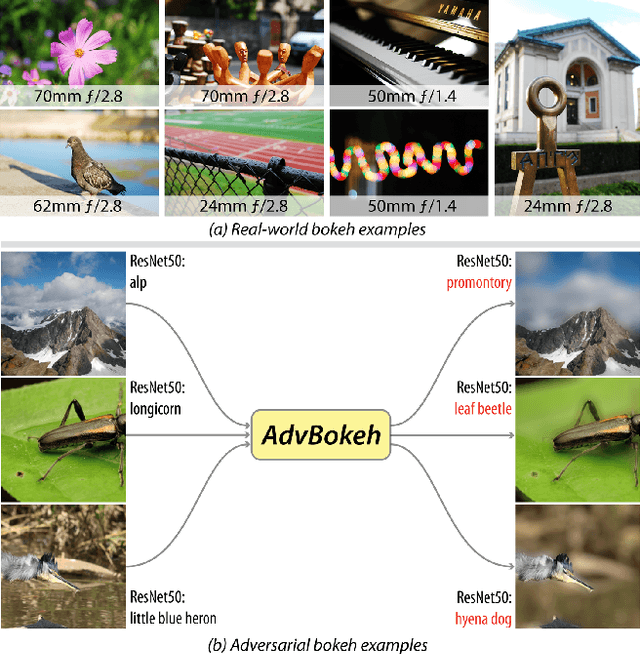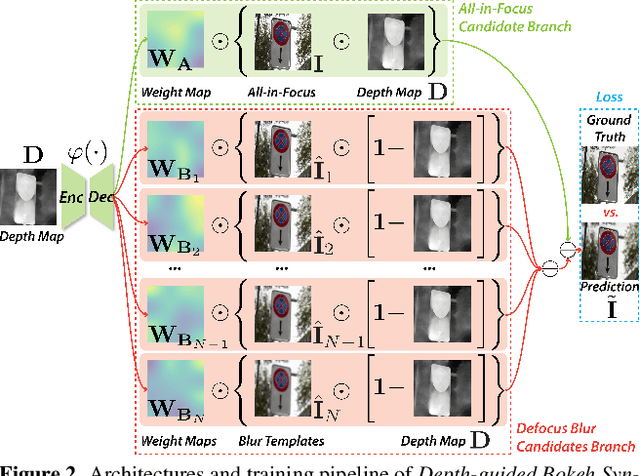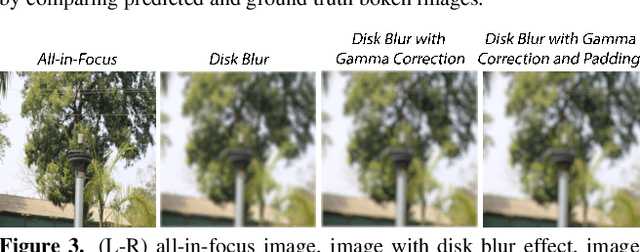AdvBokeh: Learning to Adversarially Defocus Blur
Paper and Code
Nov 25, 2021



Bokeh effect is a natural shallow depth-of-field phenomenon that blurs the out-of-focus part in photography. In pursuit of aesthetically pleasing photos, people usually regard the bokeh effect as an indispensable part of the photo. Due to its natural advantage and universality, as well as the fact that many visual recognition tasks can already be negatively affected by the `natural bokeh' phenomenon, in this work, we systematically study the bokeh effect from a new angle, i.e., adversarial bokeh attack (AdvBokeh) that aims to embed calculated deceptive information into the bokeh generation and produce a natural adversarial example without any human-noticeable noise artifacts. To this end, we first propose a Depth-guided Bokeh Synthesis Network (DebsNet) that is able to flexibly synthesis, refocus, and adjust the level of bokeh of the image, with a one-stage training procedure. The DebsNet allows us to tap into the bokeh generation process and attack the depth map that is needed for generating realistic bokeh (i.e., adversarially tuning the depth map) based on subsequent visual tasks. To further improve the realisticity of the adversarial bokeh, we propose depth-guided gradient-based attack to regularize the gradient.We validate the proposed method on a popular adversarial image classification dataset, i.e., NeurIPS-2017 DEV, and show that the proposed method can penetrate four state-of-the-art (SOTA) image classification networks i.e., ResNet50, VGG, DenseNet, and MobileNetV2 with a high success rate as well as high image quality. The adversarial examples obtained by AdvBokeh also exhibit high level of transferability under black-box settings. Moreover, the adversarially generated defocus blur images from the AdvBokeh can actually be capitalized to enhance the performance of SOTA defocus deblurring system, i.e., IFAN.
 Add to Chrome
Add to Chrome Add to Firefox
Add to Firefox Add to Edge
Add to Edge